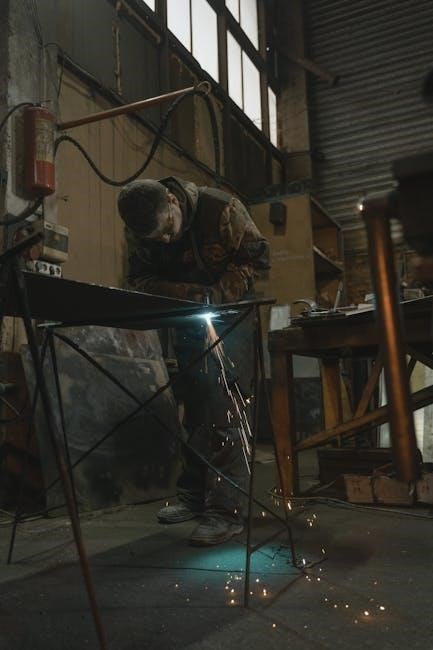
Understanding the “See Manual” Message on Your Ford Fusion
The “See Manual” message on your Ford Fusion’s dashboard, often accompanied by a wrench icon, signals that the vehicle has detected an issue requiring attention. This message is not just a generic alert; it points to specific problems, such as powertrain malfunctions or transmission issues. Referencing the owner’s manual is crucial for understanding the exact cause, as it provides detailed explanations and troubleshooting steps. Ignoring this warning could lead to more severe damage, so it’s important to address it promptly.
Modern vehicles, including the Ford Fusion, are equipped with advanced dashboard warning systems designed to alert drivers of potential issues. These warnings are crucial for maintaining vehicle health, safety, and performance. Dashboard warnings can appear as lights, icons, or text messages, each serving a specific purpose. They are triggered by the car’s onboard computer, which continuously monitors various systems such as the engine, transmission, brakes, and electrical components.
The “See Manual” message, often accompanied by a wrench icon, is one such warning. It indicates that the vehicle has detected a problem that requires further investigation. This message is not just a generic alert; it is a specific prompt for the driver to consult the owner’s manual for detailed information about the issue. Dashboard warnings like this are designed to be clear and immediate, ensuring drivers take necessary actions to prevent further damage or safety hazards.
Dashboard warnings are categorized into two main types: critical and non-critical. Critical warnings, such as the “See Manual” message, often relate to essential systems like the powertrain or engine. Non-critical warnings may pertain to less urgent matters, such as a loose gas cap or low windshield washer fluid. Understanding the difference between these types of warnings is essential for responding appropriately.
The importance of dashboard warnings cannot be overstated. They serve as a direct line of communication between the vehicle and the driver, providing vital information that can prevent costly repairs or even accidents. Ignoring these warnings can lead to more severe problems down the road, emphasizing the need for prompt attention when they appear.
In the case of the “See Manual” message, it is a clear indication that the vehicle has identified an issue that requires immediate attention. By referring to the owner’s manual, drivers can gain insight into the specific problem and determine the appropriate course of action, whether it involves troubleshooting, scheduling a service appointment, or taking other corrective measures.
The Meaning of “See Manual” with a Wrench Icon
The “See Manual” message accompanied by a wrench icon on your Ford Fusion’s dashboard is a specific warning that indicates a potential issue with the vehicle’s systems. This message is not just a generic alert; it is a direct notification that the car’s onboard computer has detected a problem that requires attention. The wrench icon is often associated with powertrain or transmission-related issues, making it a critical warning that should not be ignored.
The wrench icon, also known as the “powertrain malfunction” light, typically illuminates when there is a problem with the engine, transmission, or other components of the powertrain system. This could include issues such as faulty sensors, misfires, or transmission slipping. The “See Manual” message serves as a prompt for the driver to consult the owner’s manual for further information about the specific issue and recommended actions.
Key points to understand about this warning include:
- The wrench icon is a visual indicator of a powertrain-related issue.
- The “See Manual” message directs the driver to the owner’s manual for detailed explanations.
- Ignoring this warning can lead to more severe damage to the vehicle’s engine or transmission.
Common causes of the “See Manual” message with a wrench icon include:
- Transmission problems, such as a faulty transmission range sensor or shift interlock switch.
- Engine issues, including misfires or reduced power output.
- Throttle control malfunctions.
- Electronic power steering system errors.
When this message appears, it is important to take immediate action. Drivers should:
- Consult the owner’s manual for guidance on the specific issue.
- Use an OBD-II scanner to retrieve fault codes for a more precise diagnosis.
- Avoid driving the vehicle if it is experiencing reduced power or other symptoms of a serious malfunction.
- Schedule a service appointment with a qualified mechanic as soon as possible.
What the Owner’s Manual Says
The Ford Fusion’s owner’s manual provides essential insights into the meaning of the “See Manual” message and the wrench icon. According to the manual, the wrench light is a critical indicator that signals a powertrain malfunction or reduced power warning. This light is part of the car’s onboard diagnostics system, designed to alert drivers of potential issues that need immediate attention. The manual emphasizes that this warning is not merely a precaution but a direct notification of a problem that could affect the vehicle’s performance and safety.
The manual explains that the wrench icon, often accompanied by the “See Manual” message, is linked to issues within the powertrain system. This includes the engine, transmission, and associated components. Common problems that trigger this warning include faulty sensors, misfires, or issues with the transmission range sensor. The manual also notes that the wrench light may illuminate if the car’s computer detects irregularities in throttle control or electronic power steering systems.

One of the key points highlighted in the manual is the importance of addressing this warning promptly. Ignoring the “See Manual” message can lead to more severe damage to the engine or transmission, resulting in costly repairs. The manual advises drivers to take the following steps when the wrench icon appears:
- Consult the owner’s manual for a detailed explanation of the issue.
- Use an OBD-II scanner to retrieve fault codes for a precise diagnosis.
- Avoid driving the vehicle if it is experiencing reduced power or other symptoms of a malfunction.
- Schedule a service appointment with a qualified mechanic as soon as possible.
The manual also provides guidance on how to interpret dashboard warnings and troubleshoot common issues. It underscores the importance of familiarizing oneself with the manual to understand the car’s systems and maintenance requirements better. By following the manual’s instructions, drivers can address the “See Manual” warning effectively and ensure their Ford Fusion runs smoothly.
Common Issues Linked to the “See Manual” Message
The “See Manual” message on your Ford Fusion, often accompanied by a wrench icon, is typically linked to issues within the car’s powertrain or related systems. This warning is triggered by the car’s onboard diagnostics system when it detects a malfunction that requires attention. Some of the most common problems associated with this message include:
Powertrain Malfunctions: The wrench icon is commonly linked to powertrain issues, which encompass the engine, transmission, and drivetrain. Faulty sensors, misfires, or problems with the throttle control system can trigger this warning. The car’s computer may reduce engine power to prevent further damage, which can result in a lack of acceleration or rough idling.
Transmission Problems: Issues with the transmission are among the most frequent causes of the “See Manual” message. A faulty transmission range sensor, which tells the car’s computer the current gear, can cause the wrench light to illuminate. Additionally, problems with the shift interlock switch or solenoid pack can lead to this warning, often accompanied by difficulty shifting gears or a stuck shift knob.
Throttle Control Issues: The throttle body or throttle position sensor may malfunction, causing the car to lose power or hesitate during acceleration. This is a common issue in Ford vehicles, including the Fusion, and can trigger the wrench icon and “See Manual” message.
Faulty Sensors: Sensors play a critical role in modern vehicles, and failures in key sensors can lead to the “See Manual” warning. Common culprits include oxygen sensors, mass airflow sensors, and crankshaft position sensors. These sensors provide vital data to the car’s computer, and their failure can disrupt engine performance.
Engine Misfires: Engine misfires, which occur when one or more cylinders fail to ignite properly, can also trigger the wrench icon. This issue is often accompanied by a decrease in engine power and may cause the car to shake or vibrate. Ignoring this problem can lead to damage to the catalytic converter and other components.

Battery and Electrical System Issues: In some cases, the “See Manual” message may be linked to problems with the battery or electrical system. Faulty connections, a dying battery, or issues with the alternator can trigger this warning, especially if the car’s Battery Monitoring System detects irregularities.
These issues highlight the importance of addressing the “See Manual” message promptly. While some problems may seem minor, others can lead to significant damage if left unchecked. Consulting the owner’s manual and using an OBD-II scanner can provide valuable insights into the root cause of the issue.
How to Diagnose the Problem
When the “See Manual” message appears on your Ford Fusion’s dashboard, accompanied by a wrench icon, it indicates a potential issue that requires attention. Diagnosing the problem involves a systematic approach to identify the root cause. Here’s how you can proceed:
Use an OBD-II Scanner: Start by using an OBD-II scanner to retrieve fault codes from your car’s onboard diagnostics system. These codes provide specific information about the issue, such as a malfunctioning sensor, ignition coil failure, or transmission problems. Basic scanners can display codes, while more advanced models offer detailed explanations and live data.

Consult the Owner’s Manual: Refer to your Ford Fusion’s owner’s manual for guidance. The manual often includes sections dedicated to dashboard warning lights and their meanings. It may also offer troubleshooting tips or recommend steps to take when specific messages appear.
Perform Basic Checks: Begin with simple inspections. Check the gas cap to ensure it’s tightly sealed, as a loose cap can trigger evaporative emissions system warnings. Examine the battery terminals for corrosion or wear and clean them if necessary. Look for obvious signs of damage or wear in visible components like belts and hoses.

Check Transmission Fluid Levels: If the issue relates to the transmission, inspect the transmission fluid level. Locate the dipstick, wipe it clean, and check the fluid level against the recommended mark; Top up the fluid if it’s low, using the type specified in the owner’s manual.

Monitor for Symptoms: Pay attention to any additional symptoms, such as rough idling, reduced power, or difficulty shifting gears. These can provide clues about the nature of the problem. For example, stalling or hesitation may indicate a faulty throttle position sensor or ignition coil issue.
Consult Online Resources: Utilize online forums, repair manuals, or diagnostic tools to research the fault codes and symptoms. Websites dedicated to Ford Fusion owners often share common issues and solutions, offering valuable insights from experienced drivers and mechanics.
Visit a Mechanic if Necessary: If you’re unable to diagnose or resolve the issue on your own, it’s important to seek professional help. A certified mechanic can use advanced diagnostic tools to pinpoint the problem and recommend the appropriate repairs. Ignoring persistent warnings can lead to more severe damage and higher repair costs.
By following these steps, you can effectively diagnose the cause of the “See Manual” message and address the underlying issue promptly, ensuring your Ford Fusion continues to run smoothly.
When to Visit a Mechanic
If the “See Manual” message appears on your Ford Fusion’s dashboard, it is crucial to determine when professional assistance is necessary. While some issues may be minor and resolvable through basic troubleshooting, others may require the expertise of a certified mechanic. Understanding the severity of the problem is key to deciding the next steps.
Persistent Warning Lights: If the “See Manual” message or the wrench icon persists after restarting the engine or addressing basic issues, it indicates a more serious problem. In such cases, visiting a mechanic is essential to avoid further damage to your vehicle’s systems.
Severe Symptoms: If your Ford Fusion exhibits symptoms such as reduced power, difficulty shifting gears, or a complete loss of engine power, seek immediate professional help. These symptoms often point to critical issues like transmission malfunctions or faulty throttle control, which require specialized tools and expertise to repair.

Advanced Diagnostic Needs: While an OBD-II scanner can provide fault codes, interpreting these codes and resolving the underlying issues may require a mechanic’s knowledge. For example, codes related to the powertrain or electronic control systems often demand advanced diagnostic procedures that are beyond the scope of basic troubleshooting.
Safety Concerns: If the issue affects your ability to drive safely, such as sudden loss of acceleration or unstable steering, do not hesitate to visit a mechanic. Ignoring such problems can lead to accidents or further damage to your vehicle.

Complex Repairs: Certain issues, such as transmission range sensor malfunctions or shift interlock switch problems, are complex and require professional intervention. Attempting to fix these issues without proper training and tools can lead to costly mistakes.

Preventive Maintenance: Even if the “See Manual” message disappears on its own, it is wise to have your car checked by a mechanic. This ensures that no underlying issues are left unresolved, preventing future breakdowns and maintaining your vehicle’s performance.
Preventive Maintenance Tips

Preventive maintenance is key to avoiding the “See Manual” message on your Ford Fusion. Regular upkeep ensures your vehicle runs smoothly and reduces the likelihood of issues that trigger this warning. By staying proactive, you can identify and address potential problems before they escalate.
- Regular Servicing: Follow the recommended maintenance schedule in your owner’s manual. Routine checks for oil changes, tire rotations, and fluid levels help maintain optimal performance and prevent system malfunctions.
- Monitor Dashboard Warning Lights: Familiarize yourself with common warning lights, such as the wrench icon or check engine light. Address these promptly to avoid more severe issues down the road.
- Check Fluid Levels: Ensure engine oil, transmission fluid, coolant, and brake fluid are at appropriate levels. Low or degraded fluids can trigger sensors and cause warning messages.
- Inspect Sensors and Connections: Sensors play a critical role in your car’s systems. Clean or replace faulty sensors, and check connections for damage or corrosion to prevent false alerts.
- Maintain Battery Health: A weak or dead battery can cause electronic system malfunctions. Test your battery regularly and replace it if necessary to avoid unexpected issues.
- Follow Owner’s Manual Guidelines: The manual provides specific advice for your Ford Fusion, including tips on driving habits and maintenance. Adhering to these guidelines helps prevent wear and tear.
- Use an OBD-II Scanner: Invest in an OBD-II reader to monitor your car’s health. This tool can provide insights into fault codes and help you address issues before they become critical.
By incorporating these preventive maintenance tips into your routine, you can reduce the chances of encountering the “See Manual” message. Regular care not only extends the life of your Ford Fusion but also ensures reliability and safety on the road. Remember, proactive maintenance is always more cost-effective than repairing major issues after they arise.
The key takeaway is to never ignore the “See Manual” message. It serves as a direct communication from your car, urging you to consult the owner’s manual for guidance. Whether the issue is minor, like a faulty sensor, or more serious, such as a transmission malfunction, prompt action is essential to prevent further damage and ensure your safety on the road.
Regular preventive maintenance, as outlined earlier, plays a crucial role in minimizing the occurrence of this message. By staying on top of routine checks, monitoring dashboard warnings, and addressing issues early, you can significantly reduce the likelihood of encountering the “See Manual” alert. Additionally, familiarizing yourself with the owner’s manual and understanding common causes of this message will help you respond effectively when it appears.
Remember, your Ford Fusion is equipped with advanced systems designed to notify you of potential problems. Heeding these warnings and taking appropriate action not only preserves the health of your vehicle but also protects your investment. If you’re ever in doubt, consulting a professional mechanic is always the safest choice. By staying informed and proactive, you can enjoy a trouble-free driving experience and keep your Ford Fusion running at its best for years to come.